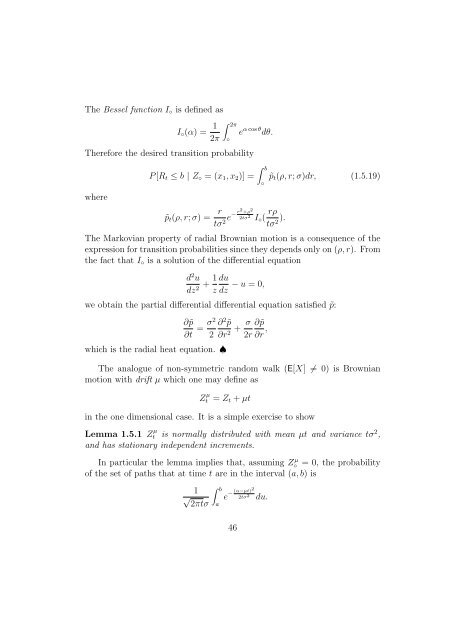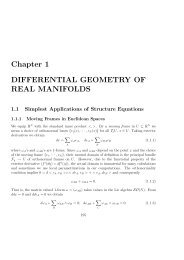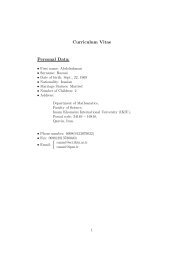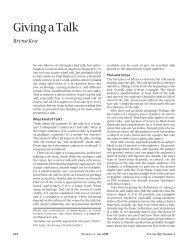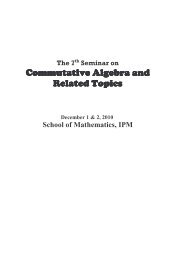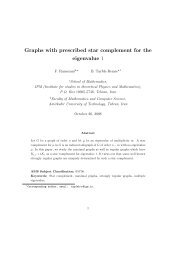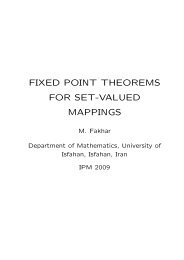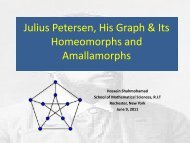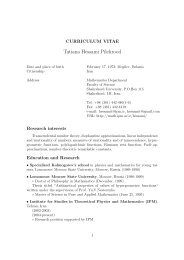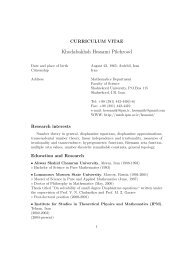1 Continuous Time Processes - IPM
1 Continuous Time Processes - IPM
1 Continuous Time Processes - IPM
You also want an ePaper? Increase the reach of your titles
YUMPU automatically turns print PDFs into web optimized ePapers that Google loves.
The Bessel function I◦ is defined as<br />
I◦(α) = 1<br />
2π<br />
e<br />
2π ◦<br />
α cos θ dθ.<br />
Therefore the desired transition probability<br />
where<br />
P [Rt ≤ b | Z◦ = (x1, x2)] =<br />
b<br />
˜pt(ρ, r; σ) = r<br />
tσ2 e− r2 +ρ 2<br />
2tσ2 I◦( rρ<br />
◦<br />
˜pt(ρ, r; σ)dr, (1.5.19)<br />
).<br />
tσ2 The Markovian property of radial Brownian motion is a consequence of the<br />
expression for transition probabilities since they depends only on (ρ, r). From<br />
the fact that I◦ is a solution of the differential equation<br />
d2u 1 du<br />
+<br />
dz2 z dz<br />
− u = 0,<br />
we obtain the partial differential differential equation satisfied ˜p:<br />
∂ ˜p<br />
∂t<br />
= σ2<br />
2<br />
which is the radial heat equation. ♠<br />
∂2 ˜p σ ∂ ˜p<br />
+<br />
∂r2 2r ∂r ,<br />
The analogue of non-symmetric random walk (E[X] = 0) is Brownian<br />
motion with drift µ which one may define as<br />
Z µ<br />
t = Zt + µt<br />
in the one dimensional case. It is a simple exercise to show<br />
Lemma 1.5.1 Z µ<br />
t is normally distributed with mean µt and variance tσ 2 ,<br />
and has stationary independent increments.<br />
In particular the lemma implies that, assuming Z µ ◦ = 0, the probability<br />
of the set of paths that at time t are in the interval (a, b) is<br />
<br />
1 b (u−µt)2<br />
−<br />
√ e 2tσ<br />
2πtσ a<br />
2 du.<br />
46


